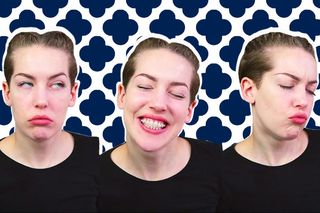
Certain Facial Expressions May Universally Convey Sincerity, Intensity
A specific wrinkle near the eye tells people you’re being genuine.

If most human communication is non-verbal, we are still discovering the ways that humans convey and perceive emotion without speaking. A new study sheds light on how a particular set of facial expressions helps us read the sincerity of a speaker’s emotion.
A new study, the result of a collaboration between University of Miami Psychology Professor Daniel Messinger collaborated and researchers at Western University in Canada, showed that our brains are pre-wired to perceive wrinkles around the eyes as conveying more intense and sincere emotions. This particular eye wrinkle, called the Duchenne marker, occurs across multiple facial expressions, including smiles, expressions associated with pain, and expressions of sadness.
“Since Darwin, scientists have wondered if there is a language of facial expression, a key set of what we call facial actions which have simple, basic meanings. This research suggests one key to this language is constriction of the eyes,” said Messinger.
Using a method called visual rivalry, the researchers showed study participants computer-generated avatars, one with and one without the Duchenne marker, to study which expressions our brains perceive as more important. When different images are shown in each eye, the brain alternates between these two images and will bring the image that is perceived as more relevant into perceptual awareness more often.
Principal investigator on the study, Dr. Julio Martinez-Trujillo, a professor at Western’s Schulich School of Medicine & Dentistry, says visual rivalry is like a window into the unconscious, and demonstrates what our brains involuntarily see as more relevant or important. “The expressions involving the Duchenne marker were always dominant. So if the emotion is more intense, your brain actually prefers to bring it into perceptual awareness for longer time,” said Martinez-Trujillo.
The investigators also asked participants to rate the expressions on a scale for intensity and sincerity, and found that people systematically ranked the Duchenne smiles and Duchenne sad expressions as more sincere and more intense than the non-Duchenne expressions.
“When you have social interactions, you need to perceive whether a person is sincere or not,” said Martinez-Trujillo. “My interest now is: what will be the results if we do this same test with people with autism spectrum disorder? They often have trouble reading out emotions from other people, so we wonder if that might have to do with their ability to read this marker for sincerity.”
While this particular hypothesis had been tested and illustrated among infants and children, this is the first study confirming the Duchenne marker intensifies emotional expression in adults.
Related


How to Care for a C‑Section Wound
